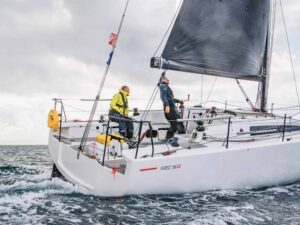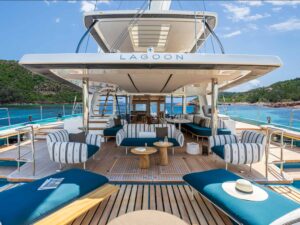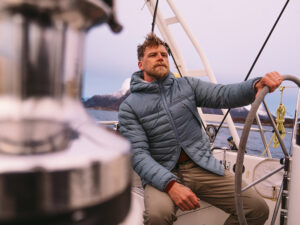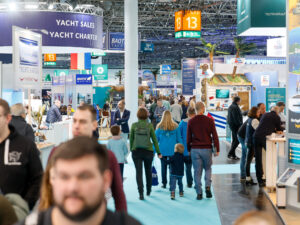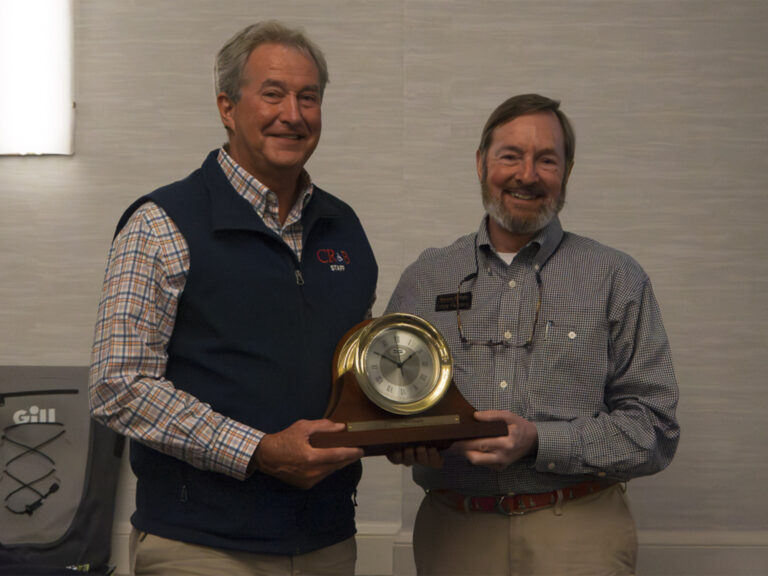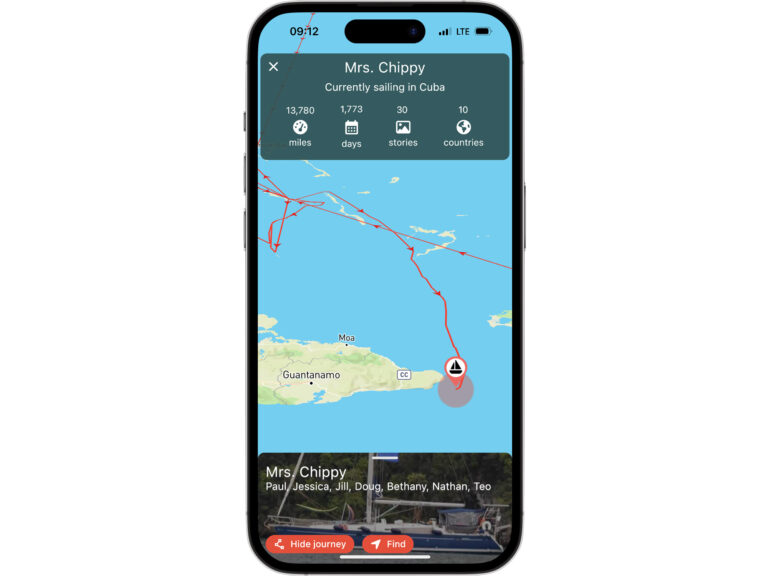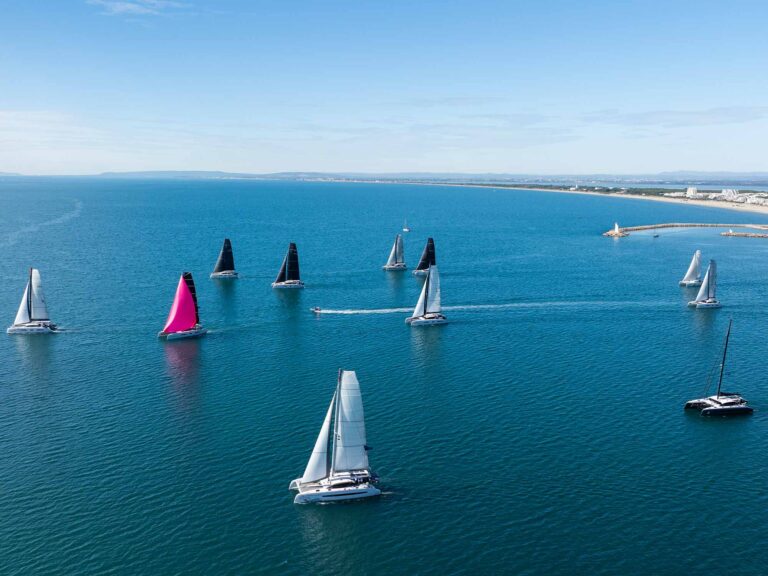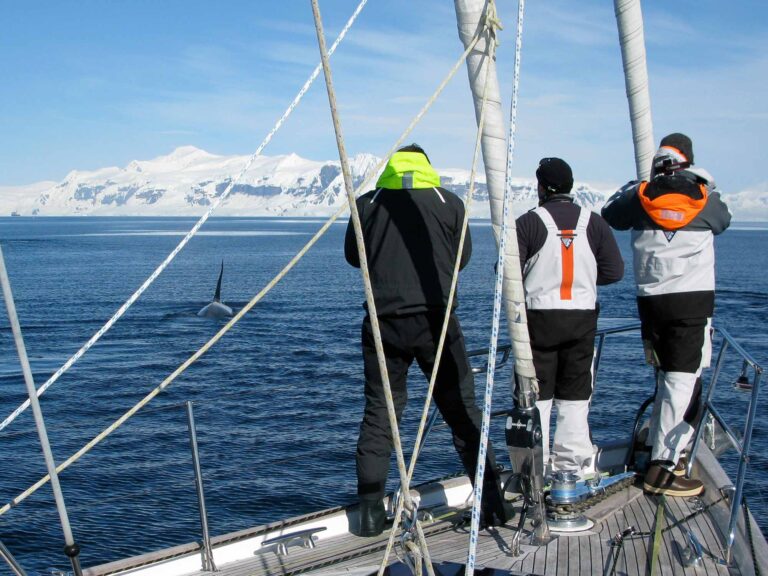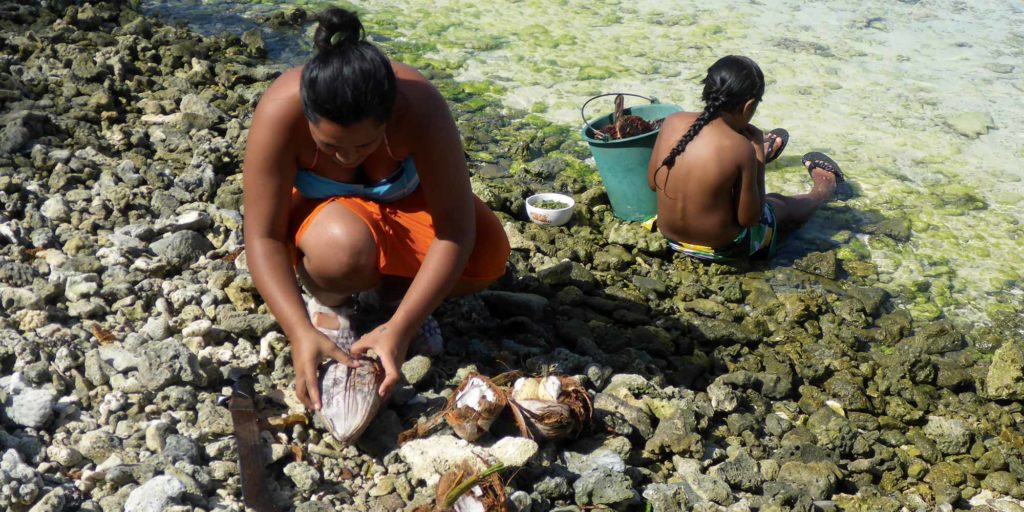
The anchor splashes into the gin-clear water as if to proclaim, “We’re here.” Not that there’s anyone around — and that’s fine by me. We’re the only boat on the east side of the lagoon in Tahaa, one of the quieter spots in French Polynesia’s Society Islands. Everyone else is making a beeline for honeymoon favorite Bora Bora, where you have to jostle with the charter catamarans for an anchorage. We’ll get there soon too. But for now, we gaze upon Tahaa’s vanilla-clad peaks, mesmerized by how the ever-changing light casts shades of violet and ochre upon them — as if Mother Nature were putting on a show just for us.
I’m a far cry from Toronto, Canada’s largest city, where I grew up and started sailing on chilly Lake Ontario. Scattered across the South Pacific like a string of broken pearls, the 118 islands of French Polynesia are home to fewer than 280,000 people, the majority of whom live on Tahiti. And the farther you go from the “big” island — a bit of a misnomer since you can drive around it in a day — the wilder things get. Forget fast internet, well-stocked grocery and hardware stores, and places to fill up on fresh water and diesel.
Forget also the cruel jolt of the alarm clock, the darkness, the cold and snow, the obligations that await back home, half a world away. Cruising the South Pacific is a world apart. And after seven weeks sailing these waters aboard Nanami, an older 30-foot Contest sloop belonging to a good friend, I know it’s not always easy. On this trip alone, two of three water tanks have failed, along with the head. Patience has sometimes run thin, and spirits have fallen along with the barometer. Yet despite, or perhaps because of, all this, I know cruising is where I’d rather be.
The Te Pari coast in the south of Tahiti Iti is accessible only by boat. Rolling green hills sharpen into jagged cliffs with waterfall after waterfall tumbling down them. The anchorages are deep, the bottom imperceptible against the black volcanic sand. The water doesn’t exactly beckon — who knows what’s swimming around down there? (If you’re looking for powdery white sand and the visibility it affords, try any other island in the archipelago.) I’m beginning to wonder why we came here in the first place, beating against the trade winds and triggering a seasickness so debilitating I thought I’d rather die. Now that I’m able to keep my food down, we’re out of fresh meats and produce. It’s canned petit salé or cassoulet — upmarket French equivalents of Spam — until the next provisioning.
“We climb up and up, until the trail opens onto a dreamlike view over the sparkling azure cove. From high above, I spot a white speck in the water, my floating home for the past several weeks.”
That’s not to say that I regret coming here. Most boats don’t bother, which is a shame because the lagoon is dotted with uninhabited motus, small coral islets ripe for exploration. Standing in the shallows of one motu, I watch in awe as seven reef shark pups circle slowly and deliberately around me. I want to call National Geographic — surely this is a rare occurrence to be documented for posterity. But no, they’re just sharks doing as sharks do, nature taking its course. Nothing unusual around here.
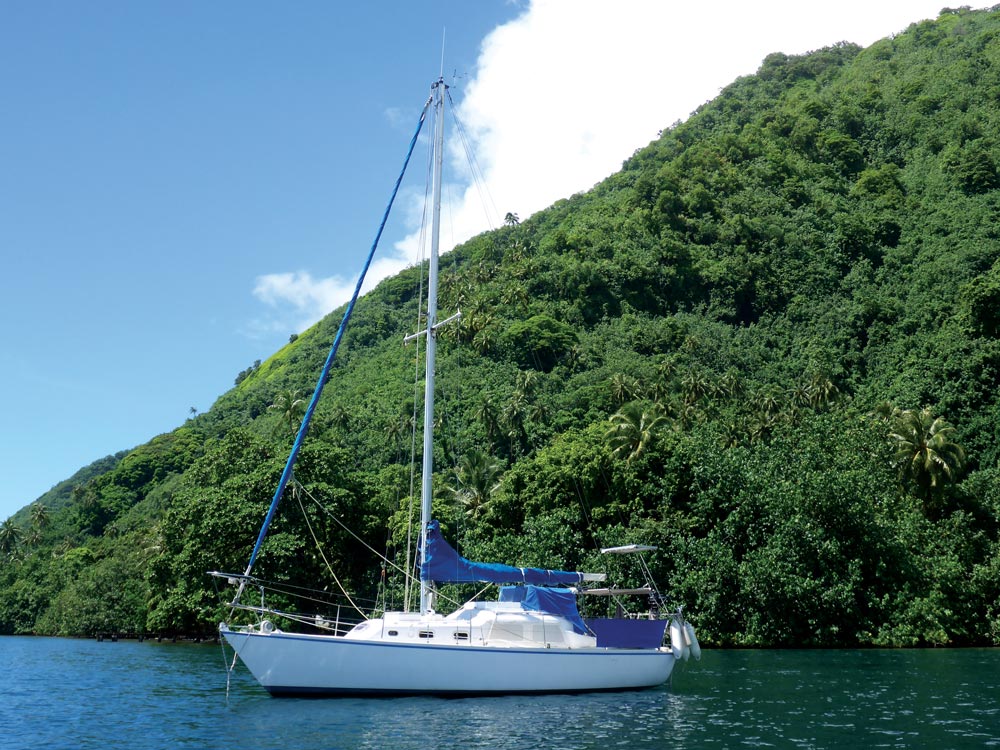
A day’s sail from Tahiti is Moorea, where we meet Francky, a fellow sailor and French expat who first came to Polynesia a lifetime ago with the military. These days, he runs four-by-four tours of the island, and lives with his beautiful Tahitian fiancee and their daughter aboard Tiare, a 38-foot Lagoon catamaran he named after the national flower of French Polynesia. A variety of gardenia, its white blossoms infuse the moist air with a gentle sweetness. C’est mon rêve, “This is my dream,” Francky says, and I believe him. He takes us under his wing, showing us around the island and hosting l’apéro, or cocktails, in Tiare’s spacious cockpit. Together we down many a ’ti punch — a delightfully easy mix of rum, fresh lime juice and simple syrup — the perfect cruising tipple. When it’s time to weigh anchor, Francky presents us with seashell necklaces, the customary Polynesian farewell gift. In true cruiser fashion, he doesn’t say goodbye (for there are always too many, too soon) but à la prochaine, “until next time.”

Eighty-three nautical miles northwest of Moorea lies the island of Huahine. It’s a cruiser’s darling, that rare place where you can anchor just off the charming town, Fare, and take the dinghy over to take care of business. Get cash from the ATM, pick up groceries, rent a bike to explore the island’s many marae, Polynesian archaeological sites, or down a frosty glass or two of Hinano, the local beer, at happy hour. Tired after the passage, we’re grateful it’s all so easy. Yet for all its convenience, Huahine is nearly devoid of tourists.
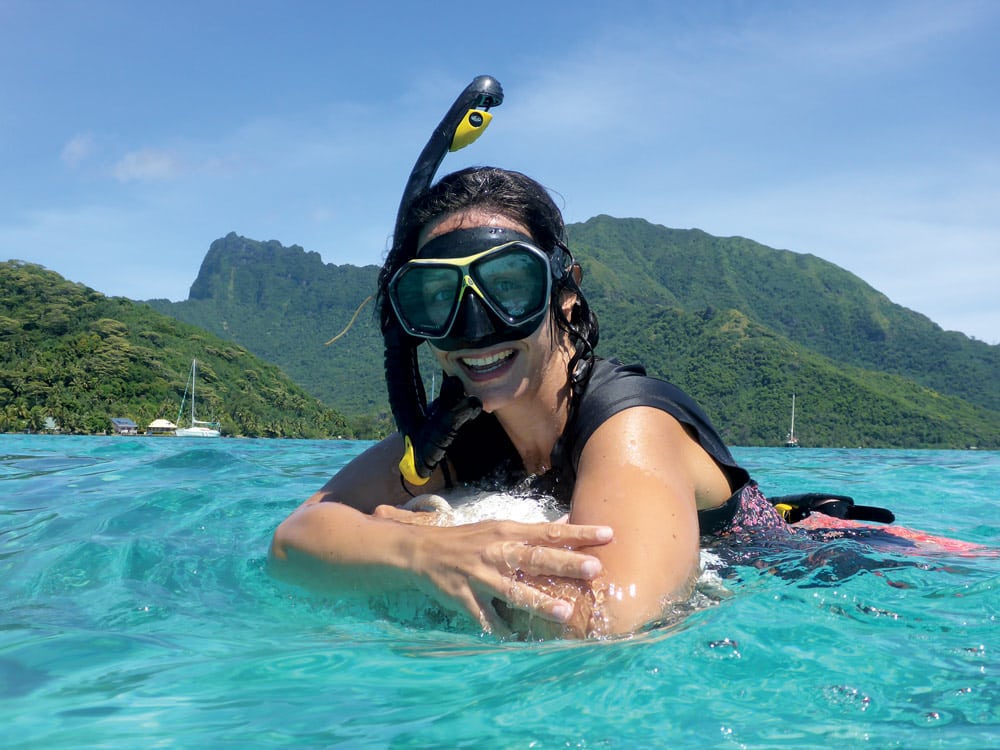
I get the feeling that Philippe, the guardian of Hana Iti beach midway down Huahine’s west coast, is a little lonely. Rowing out to greet us in his bright-red va’a, a traditional outrigger canoe, he shows us to a mooring. Later, on the coconut-covered beach, he tells us either his life story or a tall tale, I’m not sure which. Phillipe shows us the path to the ruins of the Hana Iti Hotel, up the hill and ensnared by verdant jungle. We climb up and up, until the trail opens onto a dreamlike view over the sparkling azure cove. From high above, I spot a white speck in the water, my floating home for the past several weeks. I think of my yellow brick house in Toronto’s west end. Sure, it’s comfortable. But unlike a sailboat, I can’t take it with me on my adventures. It’s starting to dawn on me, what I’d like to do with my life.

In the end, what better way is there to spend an evening than swimming with some of the ocean’s most glorious creatures? We’re on the hook in Avea Bay in the southwest of Huahine, and I’m hoping to catch a glimpse of the area’s resident manta rays. The guidebook says they like to swim along the edge of an underwater cliff where plankton, the ray’s main source of food, tend to congregate. I grab my snorkeling gear and dive in. Out of nowhere, it appears. Charcoal gray on top and white on the bottom, so large and yet so graceful. The manta ray glides along about 15 feet beneath me, doing backflips. With each turn, the ray’s gills expand and I can literally see right through it.

Approaching Bora Bora from the ocean, I wonder what all the fuss is about. It looks a lot like the other islands we’ve visited. Lush emerald peaks rising from crystal-clear waters, an earthly Garden of Eden. As if on cue, a shadow emerges from the water about 10 meters away. It’s a whale and her calf, and I’m no longer blasé. They swim alongside us for 20 minutes, mom playfully spraying water through her blowhole.
RELATED: On Watch: A Festival in French Polynesia
We spend a couple of nights at the legendary Bora Bora Yacht Club, luxuriating in long, hot showers and proximity to some of the most breathtaking yachts I’ve ever seen. There’s a supermarket and gas station down the road, and we head there on foot, red and blue jerrycans in hand. A car pulls over in front of us. Bonjour, says the driver, a plump young woman wearing a lime-green pareo, a Polynesian wraparound dress, and a hot-pink hibiscus blossom tucked behind her ear. According to local custom, a flower behind the right ear means the wearer is single, while a flower behind the left means she is spoken for, like our new friend. She smiles and gives us a lift the rest of the way and back. This would never happen in Toronto, I think.
Eventually, I learn it’s the east side of Bora, as the locals call it, that inspires all the fuss. Immense, shallow and clear, the lagoon here offers up the most dramatic views of the mountains, and some of the best inshore sailing around. It’s also where most of the development has occurred — those extravagant over-water bungalows you see in Condé Nast, the magazine for well-heeled travelers. I get a kick out of sailing within feet of the bungalows, encroaching on their guests’ very expensive privacy. It’s what they deserve for disturbing the peace with their helicopter and jet-ski tours. Later that night, I think about how cruising verges on the lifestyles of the rich and famous, the ultimate freedom, for a fraction of the cost. I’m sold.
Yvonne Palkowski is a writer from Toronto, Canada, where she is a member of the National Yacht Club. She is always looking for her next crewing opportunity, at home and abroad.

